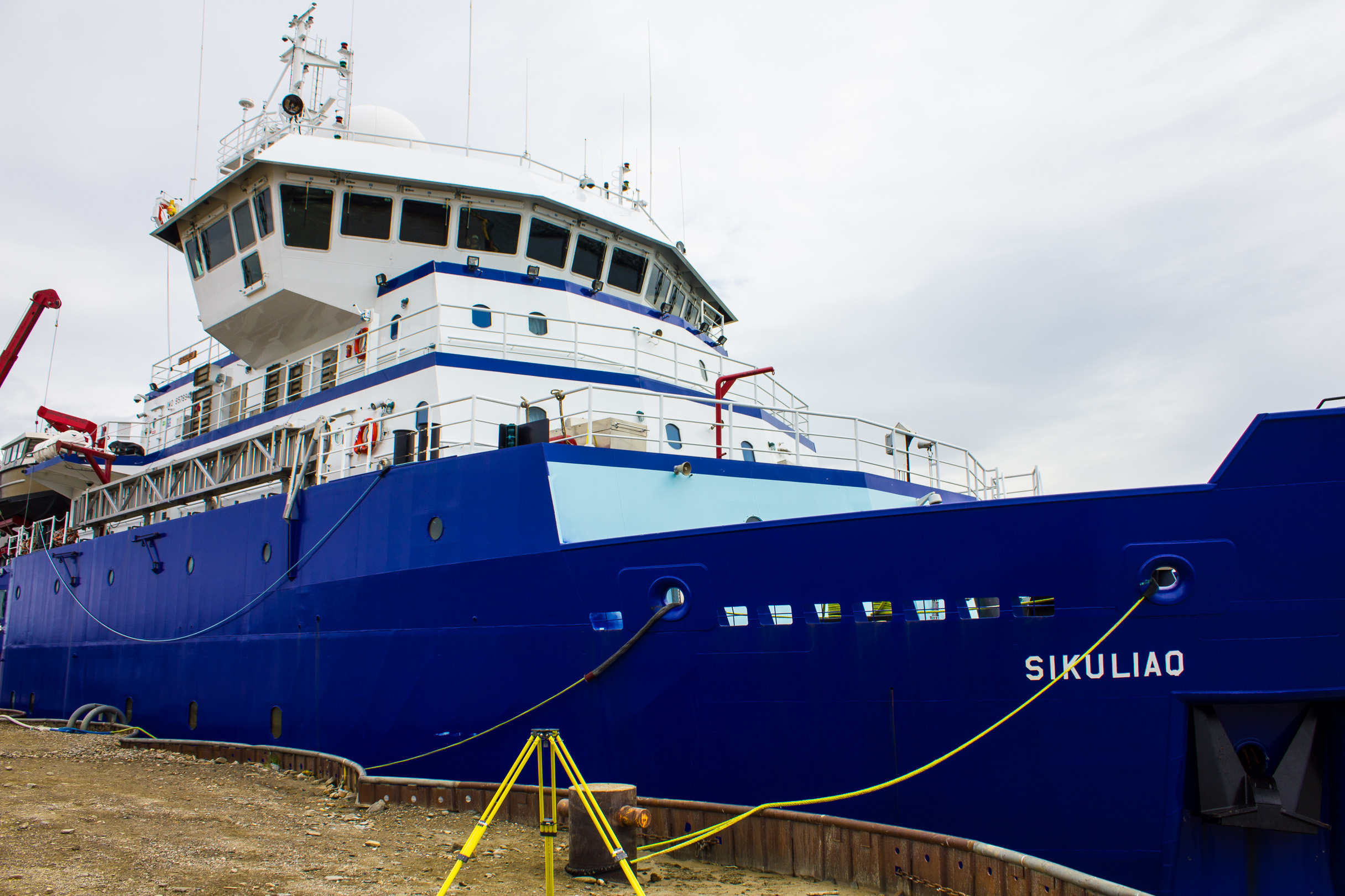The University of Alaska–Fairbanks has begun a new, comprehensive ocean ecosystem study on the Bering and Chukchi Seas.
From June 9th to 28th, the crew of the research vessel Sikuliaq collected preliminary data through observations of marine mammals, birds, weather conditions, and much more. It was the first “research cruise” of its kind funded by UAF; while the Sikuliaq has sailed in sub-Arctic waters before, the June sailing was its “maiden voyage” as a research vessel for UAF.
As Dr. Seth Danielson explains, this study focused on how changing climate would affect everything in the ocean, all the way down to the smallest organisms:
“Small scales and large scales — we are trying to get a handle on what our ocean looks like out here, what the ecosystem looks like: how it’s working, how it’s functioning. And, hopefully, put ourselves in a better position to be able to anticipate what this ecosystem really could be looking like ten and twenty years down the road from now.”
Danielson works with the University of Alaska–Fairbanks’ College of Fisheries and Ocean Sciences, and he was one of the crew members aboard the Sikuliaq. The entire “science party” involved was made up of grad students from UAF, scientists from various organizations, and Opik Ahkinga, a resident of Little Diomede.
Danielson says every participant on the research team put in large amounts of work while running on minimal amounts of sleep.
“We traveled about 2,700 nautical miles, and we spent 180 hours of on-station, over-the-side wire operations going on, collecting up to 6,500 liters of water for (the) team, who got to lug all of those around from one end of the deck to the other. They dredged up 45,000 baby clams, measured and counted (them) very precisely.”
According to Danielson, it’s been 30 years since a study of this magnitude has taken place in the Northern Bering and Chukchi Seas.
Going forward, more data will be collected on sea temperatures in these areas, then released in comprehensive reports and publications for the public. Danielson expects their full findings won’t be available for five years or so.
(KNOM’s Karen Trop also contributed to this story.)
Image at top: the research vessel Sikuliaq in Nome in 2015. Photo: Emily Russell, KNOM.





